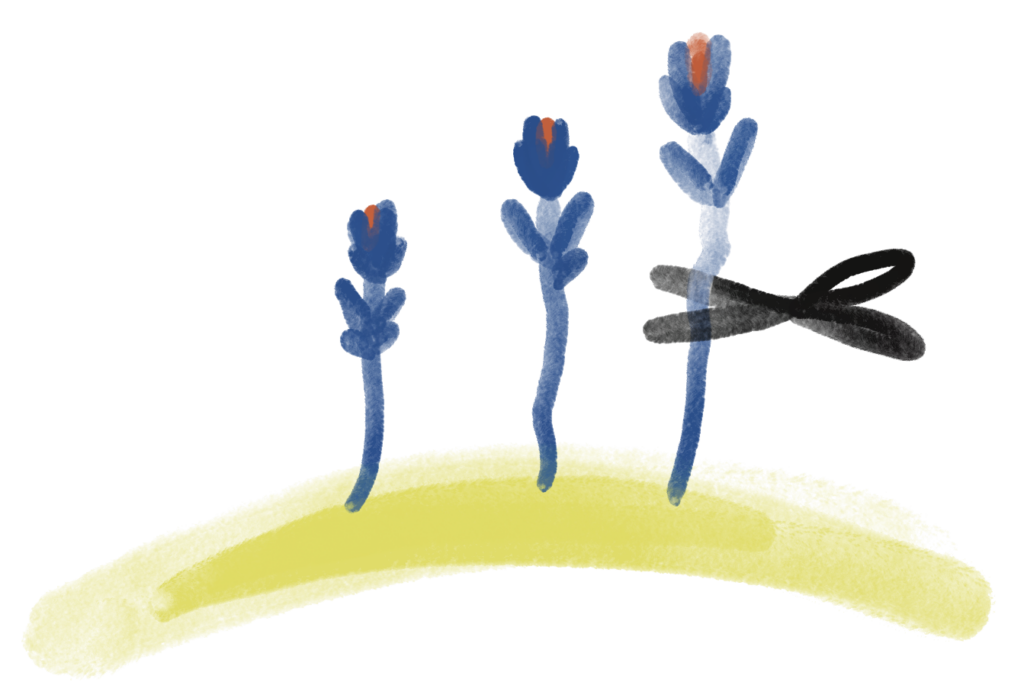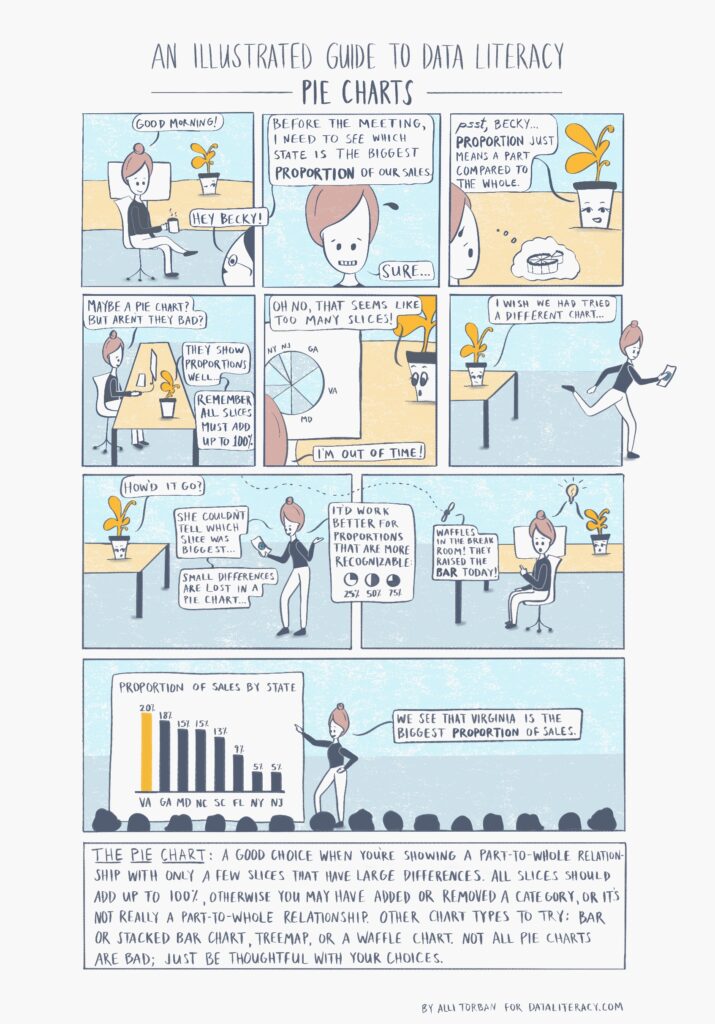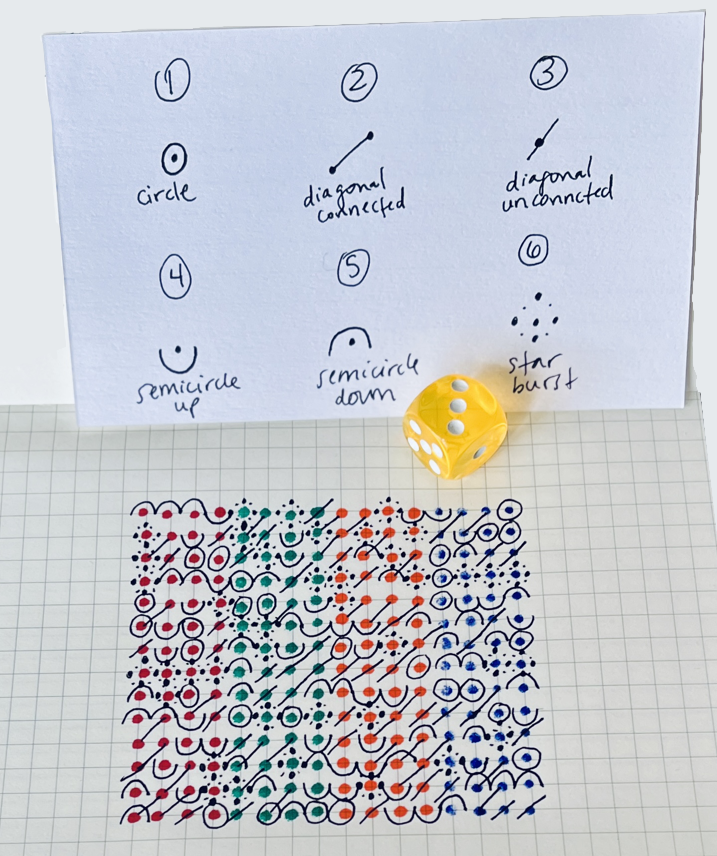Expand your mental boundaries with the “Bad Gifts” prompt
The “Bad Gifts” prompt will take your frame of mind from critical to open. It’ll help you recognize the good ideas you’re already having.
Watch this video, and then expand the Summary, Prompt, and More Context & Examples sections below it. Here’s a handy link to the Spark Journal.
⚡Summary
Here’s what we learned in this lesson:
- Your idea can’t flourish if you snip the bud.
- Practice being more open to the ideas you’re already having.
- Openness, positivity, and conscientiousness are key ingredients to creativity, as shown in this creativity flow:

⚡Try the “Bad Gifts” Prompt
Turn to page 6 of your Spark Journal. Being more open seems like a passive activity, but here’s a game you can play to practice. It’s called “Bad Gifts” and is a classic improv game that I learned from my friend Michelle Helman15 who’s a conflict resolution expert and takes improv lessons. The game is simple: pretend to give a bad gift to someone, and they need to accept the gift as if it’s exactly what they wanted.
Example:
Me: Here’s a wet sock from behind the washing machine.
You: Thank you! This will help me cool down after my workout.
Doesn’t it feel strange to think of a universe where a wet sock would be a great gift? It’s a universe where your mind is open. Openness is a mindset that you can practice! To get you started, I’ll share a list of bad gifts that you can use to play by yourself. If you play it with kids, they’re going to love it, likely because they’re naturally open to the ridiculous.
Accept these bad gifts to change your mindset to be more open:
- Here’s a dusty VCR.
- Here’s a gallon of spoiled milk.
- Here’s an old birthday card from my grandma.
- Here’s a box of expired coupons.
- Here’s a rusty spoon.
- Here’s a doll with missing eyes.
⚡More Context & Examples
Listen to the audiobook of this section
When a new idea pops into your head, what’s the first thing you do?
In my head, I critique it. I begin a barrage of questions, like, “How would I execute that? Would that actually work? Do I have the right skills or tools? How long would it take? Won’t everyone think this is a dumb idea?” This kind of critique is an essential part of creativity. After all, a creative idea is new and useful. But I bet you jump to critiquing too soon. You trim the tulips before they’ve had a chance to bloom.
We don’t need to have more ideas; we need to recognize them. Meaning, don’t throw your ideas out immediately. Recognize the buds you already have and give the tulip a chance to bloom.

⚡Suspending judgment of my ideas has been the best thing I’ve done to nurture my creativity.
For example, back in July 2021, I was challenged to create a blog post for the data literacy training company DataLiteracy.com that explains the pros and cons of pie charts to a general audience. It needed to bring a unique perspective and stand out from all the other pie chart articles out there. In other words, it needed to be new and useful (creative)!
Around that time, I’d been hanging out a lot in the graphic novel section of the library because my then eight-year-old daughter had a flourishing love for comics. One morning, I was sitting on a library bench, waiting for her to find a book, and a thought popped into my head: “What if I made a comic about someone trying to use a pie chart at work and it all goes wrong?”
On cue, I immediately began thinking about all the reasons that wouldn’t work. I can’t draw people, I don’t know how to sequence a story or make interesting frames, it’ll probably be cheesy and boring anyway, and I don’t even read comics so how could I make one!
I wasn’t just trimming this bud; I was mowing it down! I continued to sit on the bench, waiting. A few minutes later, the internal dialogue continued, “Well, I’m already in the library. I wonder if there’s a book about how to draw comics…” I got up and started walking through the aisles. I quickly found an entire row of books about creating comics. I pulled down an armful and flipped through them. It turns out, creating comics is a very learnable skill! (Aside: if you’re interested in creating comics, check out Scott McCloud’s books.) I decided to give the comic a shot. I read all the books, sketched, storyboarded, and got lots of feedback.

This comic was a huge success! It drove a ton of traffic to the Data Literacy site, and people were finding it useful and shareable. We can learn this information about the pie chart anywhere, but the creative way it was displayed reached people in a different way. I went on to create many more in the series tackling topics like the base rate fallacy and percent change.13 I even got a message from someone saying that this unique style of explaining data literacy concepts finally convinced her group to pursue more data literacy training. That’s a huge success, and I had almost snipped this beautiful tulip.
⚡I remained open a little longer than usual and gave this bud a chance to bloom.
Now, let me address a question you’re likely wondering: “What if ideas don’t pop in my head like that?” They do! You’re probably just used to snipping them too fast to notice.
How to have more ideas
To have more ideas, you need to be more open to the ideas you’re already having. At first, I found the idea of “openness” to be general and obvious, but then I found research that suggests that it’s quite meaningful.
The research study “The Creative Life: A Daily Diary Study of Creativity, Affect, and Well-Being in Creative Individuals” by Kaile Smith and others14 sought to understand the relationship between personality, well-being, and creative activities. They recruited 290 creative individuals, such as early career scientists, artists with decades of experience, and hobbyists working on their passions after work, and asked them to self-assess their personality traits along with filling out a daily survey for two weeks. The survey asked how creative they were that day, whether personally or at work, and to rate their feelings, which ranged from positive to negative (e.g., energetic, happy, relaxed, sad, anxious, angry).
⚡They found that the strongest personality predictors of creativity were openness to experience and conscientiousness (i.e., feeling dutiful).
This mirrored my experience as well. Like in the comic example, I could see that being more open to experiences and thoughts has supported my ability to be more creative. If you want more ideas, then it’s time to practice being more open in your daily life.
Your attitude and mood matter, too
There’s another important finding in The Creative Life research paper: Individuals reported more creativity when they experience more positive emotions rather than negative emotions. I’ve felt that way in my creative work as well. Feeling worried or sad about something in my personal life leaves me feeling unmotivated to explore and create. When I interviewed information designers on my podcast, the consistent answer to what kills their creativity was “negative feelings.”
Mesa Schumacher, a science artist who creates illustrations and infographics for clients such as National Geographic and Scientific American, told me that she has a hard time feeling creative and open to ideas when she’s emotionally stressed out.
“If I have a fight with my spouse or something, I really want to resolve that before I can go and be creative… I’ll have moments where I feel like my teeth are clenched and my joints are all clenched up, and I think maybe I need to do something to calm down so I can get more creative headspace.”
To bring herself back into a calmer state, Mesa heads outdoors for a long walk: “I do think there’s something about getting out in nature that just kind of fixes your brain.”16
Andy Kirk, an independent data visualization expert and author of Data Visualisation: A Handbook for Data Driven Design, also cast a vote for negativity as a creativity killer. He says, “Ultimately, annoying things that are stressing me out will always kill my creativity. And it could be low-level stuff. You know, I’m very aware that in my downstairs bathroom there’s a radiator that’s got the potential to leak, and it’s just on my mind.”17
Those small annoyances can build up and mess with your mental state. Beyond the small things, the world experienced a collective anxiousness and fear during the pandemic. Andy found that the pandemic left him creatively bankrupt in some parts of his work.
“I couldn’t write articles. I couldn’t write pieces for the blog. I couldn’t even face the prospect to write anything in respect of a new edition of the book. Stress, anxiety, and annoyances just become so distracting and kill that spark.”
Generally, it seems a positive state of mind supports openness to ideas and therefore creativity. But it’s not the only path to creativity. Remember my dataviz wallpaper project was born from pandemic anxiety. Sometimes, negative emotions can be a catalyst for creativity since they can force you to step out of your comfort zone and try something new. Overall, creativity is best supported by positivity. Keep this in mind as you try to create the conditions for ideas to flow.
Hold space for openness and positivity, but then keep going
Here’s what we’ve learned so far: Make sure to give your ideas a chance to flourish by being more open. Practice openness and positivity with the “Bad Gifts” prompt. But then you do need to start assessing if one of your ideas is useful. Consider this creativity flow:

- Ideate: Be positive and open. Write down your ideas, gather inspiration, have novel experiences, and reduce negativity.
- Rest: Take a break, compare an idea against your needs, and get feedback.
- Execute: Put your head down and start implementing your idea.
When you begin a project, you’ll be positive and open to ideas, move into evaluating the idea, begin executing dutifully (that’s when conscientiousness shows up), but then you’ll inevitably hit a snag. Something won’t work as you thought, and you don’t know what to try next. That’s when you loop back around and evaluate, collaborate, or rest. You’ll see a new problem, and then ideate again, remaining positive and open.
The key is to give space to each phase. I like to delineate each phase with some sort of action to make sure I’ve given it a true “session” rather than rushing through this lifecycle with racing thoughts. A few ideas to mark the beginning or end of a session: coffee break, walk outside, a meeting, or change work locations.
⚡Do something that puts temporal or physical space in between the sections of the creativity flow.
During my interview with Mike Brondbjerg,18 a lead information designer for the Intelligence Unit at London City Hall, he shared a personal project that beautifully moves through this creativity flow. Before the pandemic, Mike endured long train rides to work, but he used this time to create generative artwork. He shared the artwork with his friend Frederik Vanhoutte, and they called it “Creative Commuting.” One of these generative art projects involved an extremely low-tech tool: dice!
First, he’d define his constraints. If he rolled the number one, what would he have to draw? A triangle or a line? Which direction would it point and what color would it be? Mike had to suspend judgment for a moment while he built his legend up to six. Then he’d dutifully execute by rolling the die and drawing whatever it told him to.
This is the ultimate stress-free way to practice the creativity flow. In just a few minutes, you can practice being open, evaluate, execute, then evaluate again, and so on. There are no consequences, and you may end up with artwork that you’re proud of!

You may be wondering: “But will this really have an effect on my creativity in data communication?” Maybe, or maybe not. It may help you connect the dots in a future project. Or it may simply be an exercise in openness and serendipity.
⚡You can’t innovate when you’re always taking the most efficient route.
As for Mike, he found that participating in these “Creative Commuting” activities has helped him be more creative in his data visualization work at London City Hall. This open and iterative mindset has helped him develop creative ideas, like when he turned London census data into 3D flowers to pull readers into this data in a new way.
Citations
- 13. Read the whole series: https://dataliteracy.com/tag/comic.
- 14. Kaile Smith, Alan Pickering & Joydeep Bhattacharya (2022). “The Creative Life: A Daily Diary Study of Creativity, Affect, and Well-Being in Creative Individuals,” Creativity Research Journal, 34:4, 460–479, DOI: 10.1080/10400419.2022.2122371.
- 15. https://www.michellehelman.com.
- 16. Episode 77: What a daily practice looks like: https://dataviztoday.com/shownotes/77.
- 17. Episode 76: Creativity is a spectrum: https://dataviztoday.com/shownotes/76.
- 18. Episode 84: How to use serendipity to fuel your experiments and innovation: https://dataviztoday.com/shownotes/84.